Updated: 09-Apr-2020
The Hiero engines were designed by the Austrian car racer Otto Hieronimus. (Sometimes Hieronymus)
-The first Hieronimus engine was a four-cylinder that was manufactured by "Laurin und Klement Auto". It had four inline upright cylinders and gave 60 hp.
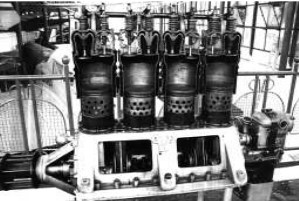
“Hiero 4-cylinder engine in Budapest”
-What calls our attention is that there are so many holes in the pistons skirts.
-The A model gave 85/95 hp at 1,400 rpm, from 1912-13 and was manufactured by "Werner und Pfleiderer" (photo) and later by "Warchalowski, Eissler und Co" (sometimes Essler). It also had 4 cylinders and was water cooled.
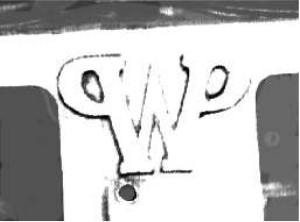
“Werner und Pfleiderer logo”
-The 85/95 CV built by Hungarian Ganz-Fiat was the A95-LE.

“Hiero 85 CV on Condor”
-The 85 CV was installed on the Etrich MLG/Lohner Condor model among many other aircraft of the Austro-Hungarian Empire.


“Hiero E”
-The Hiero "E" gave 145 CV at 1,400 rpm. This was in the year 1914. It was a upright in line six-cylinder water-cooled engine with a total displacement of 11.91 liter.
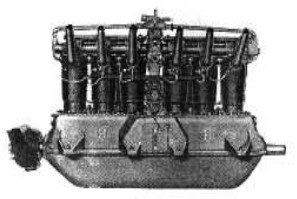
“Hiero 200”
-In 1914 they also built an eight-cylinder in line that gave around 200 CV. But Hiero's success were the six-cylinders, with a wide range of powers.
-The 145 CV and the 200 CV, apart from being built by "Warchalowski, Eissler und Co" in Vienna, they were also manufactured by "Loeb" in Berlin.
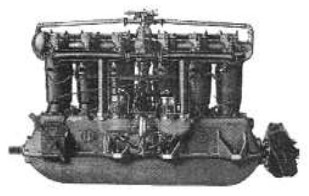
“Hiero 200, left side view”
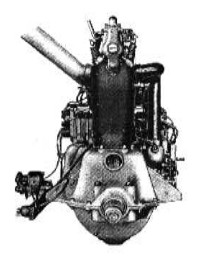
“Hiero 200, front view”
-The 145 CV is known to be installed on the Lloyd CII. The 200 CV engine was installed on the Steyr plane.
-The 220 CV on the Hansa Branderburg C. And the 230 CV, known as "Hiero L", on the Phönix C1 and Hopfner HV3.
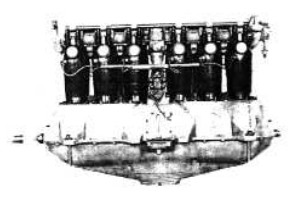
“Hiero 230”
-The Hiero II is from 1915 and was built by Warchalowski, Eissler und Co, (and licensed by Loch Motorwerke in Berlin and Breitfeld-Danek in Prague).
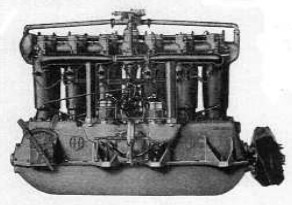
“Hiero II”
-The Hiero IV was also made by Czechoslovakian Breitfeld-Danek. If the Hiero II gave 200 CV, the IV went up to 230/240 CV.
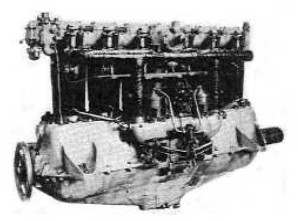
“Hiero IV”
-Read on a Hiero engine plate:
“Hiero Flugmotor, Osterr.”
Ind. Werke Warschalovski
ESSLER and Co. AG.- 6 cyl.
Type HN 1096. 218 CV a
1400 rpm.- Peso 314 Kgs.

“Hiero 240 CV”
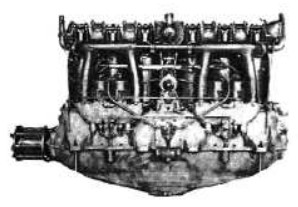
“Hiero 300 CV”
-In 1918, a larger six-cylinder, gave 320 CV, while the previous 200 CV engine had been developed up to 250 CV without changing dimensions or weight.

“Strange inverted 8V engine”
-The Hiero 8-cylinder inverted V engine can be considered experimental and unknown. It gave 200 CV and was installed on the Phönix 20.02 prototype.
-This engine is from 1915. Later a Daimler would be installed.
-Later there was a four-cylinder that gave 190 CV and a six-cylinder that gave 280 CV, as well as a two-cylinder with 40 CV.
--The latter, just like the others, is assigned to Hieronymus, its designer, but under the Hiero brand.
From Appendix 9: The E model that appears in the main text can also be seen in detail in Vienna
-The red copper sleeves, (cuivre rouge) together with the yellow brass shielding ramps give it a really nice look.

“Hiero E” (E-V)
-On the aluminum engine block, enhanced in the foundry, there is the symbol "PWP" of Werner und Pfleiderer, the constructor of this engine.

“Hiero E angled front view”
-If any reader has the opportunity to see it "in situ", he will have occasion to observe a curiosity: the cylinders are marked with a number in relief that are in the following order: from front to rear 1-5-3-6-2-4, so, when it was restored someone confused the order of the cylinders with the firing order. A notable error.
-At the front of the engine are the two magnetos and below them, included in the same casting, there is the lubrication box with its small pumps.
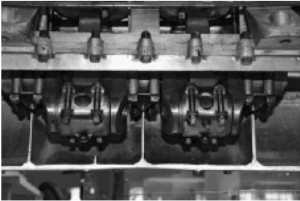
“The open crankcase shows the connecting rods”
-Each connecting rod is enclosed in a chamber that is expected to be flooded with oil.
-The bearings are somewhat long because between the bolts (4 instead of the usual 2) there is a large hole for the oil to reach the crankshaft.
-On the crank head there is a spoon that collects the oil and also lifts it to create a general gurgling that greases the whole.
-At the Kew museum in England there is a Hiero 95 CV, A model.
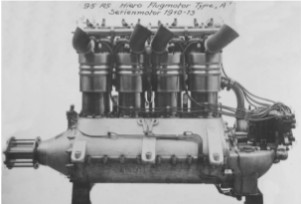
“Hiero A” (foto AEHS)
-We found several engines in England at the Kew Museum, where there is an interesting range of this brand.
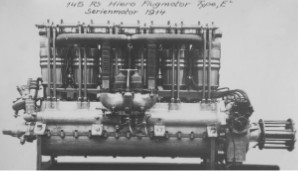
“Hiero E de 145 CV” (AEHS)
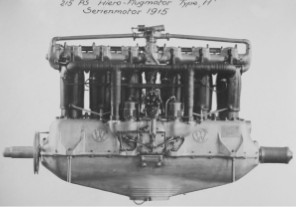
“Hiero H, 215 CV”
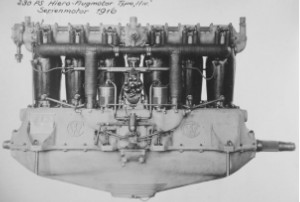
“Hiero Hiv, 230 CV”
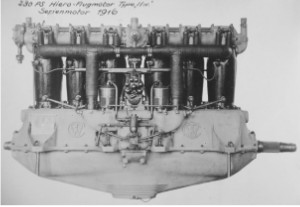
“Hiero K, 300 CV”
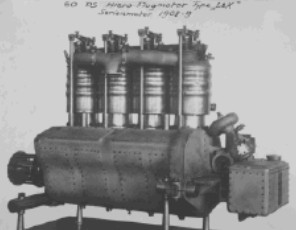
“Hiero L&K, 65 CV”
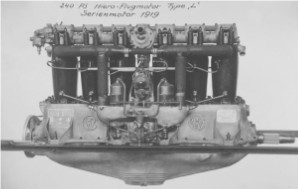
“Hiero L, 240 CV”
-In general built by Warschalowsi & Pfleiderer except the L & K, which was built by Laurin & Klement.
-We received an ad for a Hiero engine that was built by Warchalowski, Eissler und Co. It shows a typical engine together with the brand's logo.
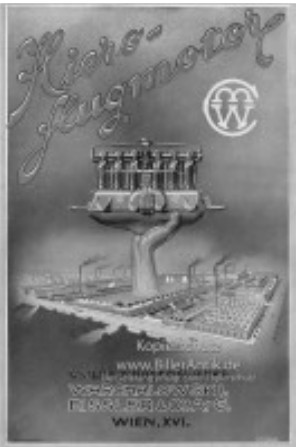
“Hiero, W&E brochure”
From Appendix 10: The "E" model Hiero engine that gave 45 CV seen from the opposite side to the one shown in the main text, in the photo below. Specifically, this engine was built by Warchalowski, Eissler und Co.

"See embossed signs P-W-P on the block"
Engines of HIERO
Model: 2 cyl. 40 CV
Arquitecture: 2-cylinder
Cooling:
Total Displacement:
Bore / Stroke:
Power: 40 CV
Weight:
Model: 4 cyl, 190 CV
Arquitecture: 4-cylinder In-line
Cooling:
Total Displacement:
Bore / Stroke:
Power: 190 CV
Weight:
Model: 4 cyl. inline 60/65 CV (L&K
Arquitecture: In-line
Cooling:
Total Displacement:
Bore / Stroke:
Power: 60 CV
Weight:

"Hiero L&K, 65 CV"
Model: 6 cyl, in line, 200 CV
Arquitecture: 6-cylinder In-line
Cooling:
Total Displacement:
Bore / Stroke:
Power: 200 CV
Weight:

"Hiero 200, right side"
Model: Hiero 6 cyl. in line y 320 CV (1918)
Arquitecture: 6-cylinder In-line
Cooling: Liquid
Total Displacement:
Bore / Stroke:
Power: 320
Weight:
Model: Hiero H, 215 CV
Arquitecture: 6-cylinder In-line
Cooling: Liquid
Total Displacement:
Bore / Stroke:
Power: 215 CV
Weight:

"Hiero H, 215 CV"
Model: Hiero Hiv, 230 CV
Arquitecture: 6-cylinder In-line
Cooling: Liquid
Total Displacement:
Bore / Stroke:
Power: 230 CV
Weight:

"Hiero Hiv, 230 CV"
Model: Hiero II, 6 cyl. inline, 200 CV
Arquitecture: 6-cylinder In-line
Cooling: Liquid
Total Displacement:
Bore / Stroke:
Power: 200 CV
Weight:

"Hiero II"
Model: Hiero IV, 6 cyl. in line, 240 CV
Arquitecture: 6-cylinder In-line
Cooling: Liquid
Total Displacement:
Bore / Stroke:
Power: 240 CV
Weight:

"Hiero 240 CV"
Model: Hiero K, 300 CV
Arquitecture: 6-cylinder In-line
Cooling: Liquid
Total Displacement:
Bore / Stroke:
Power: 300 CV
Weight:

"Hiero K, 300 CV"
Model: Hiero L&K, 65 (Laurin & Klement)
Arquitecture: In-line
Cooling:
Total Displacement:
Bore / Stroke:
Power: 65 CV
Weight:
Model: Hiero V8 inverted, 200 CV
Arquitecture: 8-cylinder Inverted V-engine
Cooling:
Total Displacement:
Bore / Stroke:
Power: 200 CV
Weight:

"Strange inverted 8V Hiero engine"
Model: Model A, 85/95 CV, 4 cyl.
Arquitecture: In-line
Cooling: Liquid
Total Displacement:
Bore / Stroke:
Power: 95 HP @ 1400 rpm
Weight:

"Hiero A"
Model: Model E, 145 CV, 6 cyl.
Arquitecture: 6-cylinder In-line
Cooling: Liquid
Total Displacement: 15 Ltr.
Bore / Stroke: 135 x 180 mm
Power: 145
Weight:

"Hiero E, 145 CV"
Model: Model L, 230 CV, in line
Arquitecture: 6-cylinder In-line
Cooling: Liquid
Total Displacement:
Bore / Stroke:
Power: 240 CV
Weight:

"Hiero L, 240 CV"


